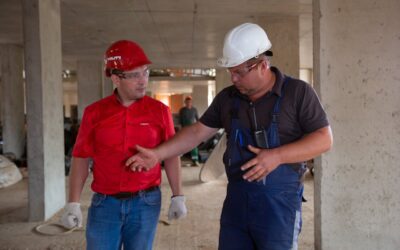
A recent report from the state Office of Rural Prosperity identifies housing and workforce shortages as two of the biggest challenges facing rural Michiganders this year.
MICHIGAN—A 70-page report released last month by the Michigan Office of Rural Prosperity spells out several challenges that are facing rural communities across Michigan this year, as well as outlines some potential statewide strategies that might be able to solve them.
The new report—called the “Roadmap to Rural Prosperity”—is a product of the Michigan Department of Labor and Economic Opportunity. And its sole purpose is to help ensure state leaders are keeping an eye out for Michigan’s rural communities, in addition to larger cities.
“The Roadmap is a plan for fostering resilience and connectivity in our rural communities,” Gov. Gretchen Whitmer said in the foreword. “By listening to the voices of folks in our rural communities and collaborating closely with state agencies, we will build a brighter future.”
How does the state define rural Michigan?
Rural communities are defined by having a small population, being geographically remote, and having a deep connection to natural resources—especially agricultural land. The report shows about 20% of Michiganders live in rural areas, which comprise about 94% of the state’s land area, including about 8.2 million acres of public land and 3,300 miles of Great Lakes coastline.
Rural Michigan encompasses all 12 federally recognized tribes in the state, more than 1,400 local governments, and 70 counties that are considered rural or mostly rural, the report states.
More than two-thirds of the state’s school districts (and 21 colleges) are also in rural areas.
What do rural Michiganders have in common?
Nearly 50,000 farms make Michigan one of the most agriculturally diverse states in the country. But the vast majority of rural Michiganders are employed in education and healthcare, followed by manufacturing. Construction and retail trade also make up a significant portion of rural jobs.
On average, rural Michiganders tend to be much older and whiter than their non-rural counterparts, with the largest single demographic in rural Michigan consisting of those who are ages 65 and older, and most rural counties in Michigan being more than 80% white.
The report also identified a number of concerning population trends across Michigan’s rural communities—including a lack of diversity in age, experience, and backgrounds that has made it challenging for rural communities to meet the needs of their local residents and businesses.
Rural adults tend to have lower rates of bachelor and graduate degrees than associate degrees compared to non-rural Michiganders, which correlates with lower incomes and higher poverty.
And much of rural Michigan—particularly areas in the Upper Peninsula, Northeast Michigan, the Thumb, and Southern border counties—saw a population decline from 2010 to 2020.
What are the biggest challenges facing rural communities?
According to the report, rural communities share many of the same challenges as their urban counterparts—including aging or inadequate infrastructure, lack of quality and affordable housing opportunities, overburdened local governments, and workforce shortages.

The two biggest challenges cited in the report were about housing and workforce shortages.
1.) Increasing Housing Opportunities
The single most cited issue facing rural communities in Michigan—both now and into the future—is a lack of affordable housing for workers and their families. And according to the state report, a “perfect storm” of trends has driven housing shortages across rural Michigan.
“Household sizes are shrinking, requiring more units even for declining populations; older residents are increasingly choosing to age in place; and more housing has been converted to seasonal use or used for short-term rentals,” the report states. “The increase in second homes and short-term rentals has hit rural Michigan especially hard, drastically shrinking the supply and increasing the price of homes for purchase or rental by year-round residents.”
2.) Attracting a Larger Worker-Age Population
Most of rural Michigan is considered a “severely distressed” or “distressed” labor market.
According to the report, workforce challenges and the housing crisis in rural Michigan are linked—namely due to employers being unable to fill open positions because applicants cannot find affordable housing in the area. Additionally, many rural communities serve as popular retirement destinations, which has only added further demand to the limited housing stock.
“Meanwhile, population decline among younger individuals and families over the last several decades has narrowed the future workforce pipeline, with fewer children in schools and ultimately the workforce,” the report states, noting that less educational diversity in the rural workforce has also made it “especially challenging” to fill a range of open jobs in rural Michigan.
How do we solve those challenges?
The state defines rural prosperity as “resilient, connected rural residents, businesses, communities, and natural environments.” It also identified seven strategies to make it happen:
- Grow and diversify the workforce across sectors by increasing labor force participation, retaining or reskilling workforce, and attracting out-of-state talent in rural-conscious ways that allow rural businesses to launch, grow, and evolve.
- Improve individual health and economic well-being by overcoming rural-specific barriers to accessing quality services—including healthcare, education, childcare, high-speed internet, and transportation to allow residents to reach their full potential.
- Support local and regional capacity to deliver services by increasing resource supports, building partnerships, and developing capacity to meet immediate demands and evolving needs of residents, businesses, communities, and natural environments.
- Expand quality and attainable housing opportunities by increasing state investments, enhancing technical support, and fostering policies that facilitate new housing options to ensure rural residents can meet their diverse housing needs.
- Build and maintain resilient infrastructure by empowering effective planning and coordination between government agencies, connecting communities with resources that address rural realities and meet the evolving needs of residents and businesses.
- Enhance regional economic development efforts by building on uniquely rural attributes and resources, empowering regions through flexible funding, and fostering a supportive rural business climate to ensure rural residents and communities thrive.
- Protect, conserve, and be a responsible steward of natural assets by balancing development and land preservation, offering resources to preserve natural environments, and encouraging environmentally conscious business practices.
What’s next?
Whitmer established the Michigan Office of Rural Development in 2022, largely in response to concerns from rural Michiganders who wanted to ensure state policies, programs, and other resources were tailored to match the unique needs of rural areas. Last year, the office was renamed as the Office of Rural Prosperity and charged with focusing on key rural challenges— like housing, broadband, infrastructure, workforce development, and health care access.
State officials will reportedly use the roadmap as a guide for future policies and legislation.
“We’ll be actually talking to a lot of groups over the next several months about the roadmap and how it might look in terms of local and regional initiatives, in terms of statewide initiatives,” Office of Rural Prosperity Director Sarah Lucas told Michigan Advance. “It’s really going to be, in some senses, a conversation starter and a vehicle through which we can collaborate with other agencies and with other kinds of partners, both within and outside the state of Michigan.”
READ MORE: New generation of health care workers takes care of rural Michiganders
For the latest Michigan news, follow The ‘Gander on Twitter.
Follow Political Correspondent Kyle Kaminski here.
Support Our Cause
Thank you for taking the time to read our work. Before you go, we hope you'll consider supporting our values-driven journalism, which has always strived to make clear what's really at stake for Michiganders and our future.
Since day one, our goal here at The 'Gander has always been to empower people across the state with fact-based news and information. We believe that when people are armed with knowledge about what's happening in their local, state, and federal governments—including who is working on their behalf and who is actively trying to block efforts aimed at improving the daily lives of Michigan families—they will be inspired to become civically engaged.


Fresh food, stronger farms: Michigan invests millions to support local agriculture
A new ‘Farm-to-Family’ grant program aims to connect Michigan farmers with more consumers, boost local economies, and build a stronger food system....

Rooted in Tradition: How Michigan’s Christmas tree industry is keeping the holiday spirit alive
Family farms—and traditions—help Michigan produce more Christmas trees than almost every other state in the country. GOBLES—Under a clear December...

How Gen-Z is helping rural Michiganders turn out to vote in the UP
Michigan is one of several critical swing states in this year’s election, and for Carly Sandstrom, a Marquette native and canvasser with the...

3 rural communities in Michigan got remote blood pressure care—and the results were dramatic
A pilot program helping rural Michiganders monitor their blood pressure led to big improvements—could this be what finally helps bring down the rate...

Report: Project 2025 would ‘devastate’ Michigan’s rural communities
Republicans’ Project 2025 agenda aims to enact a far-right agenda that would hurt all Michiganders, especially those living in rural communities,...







